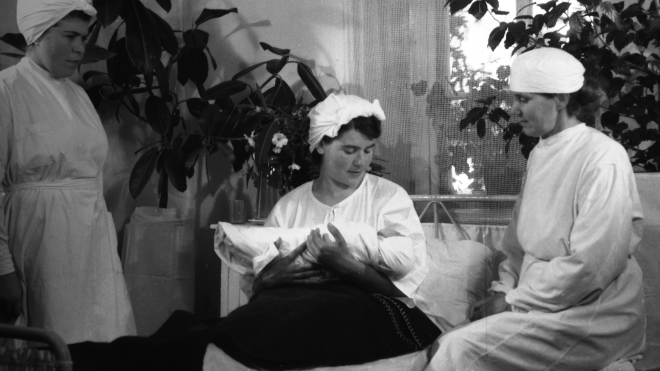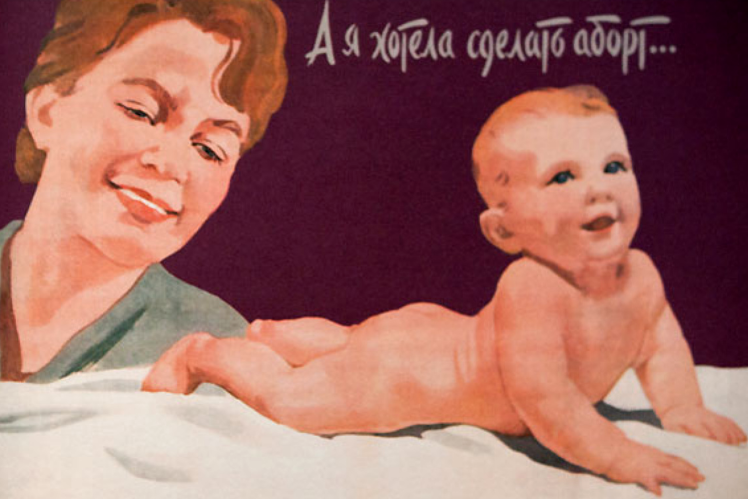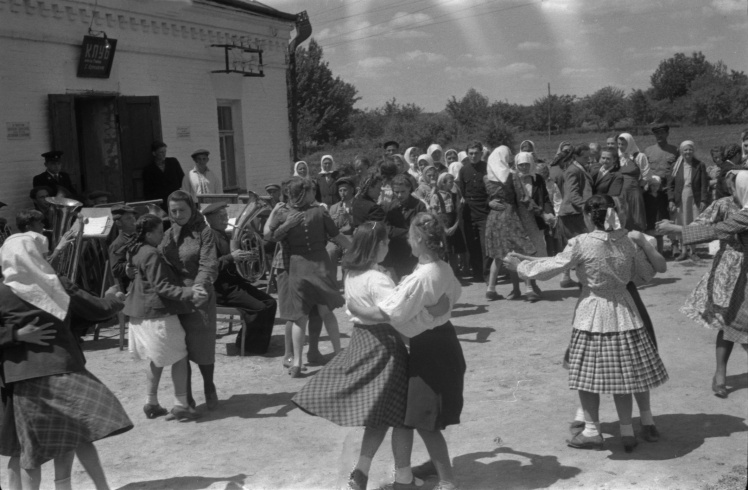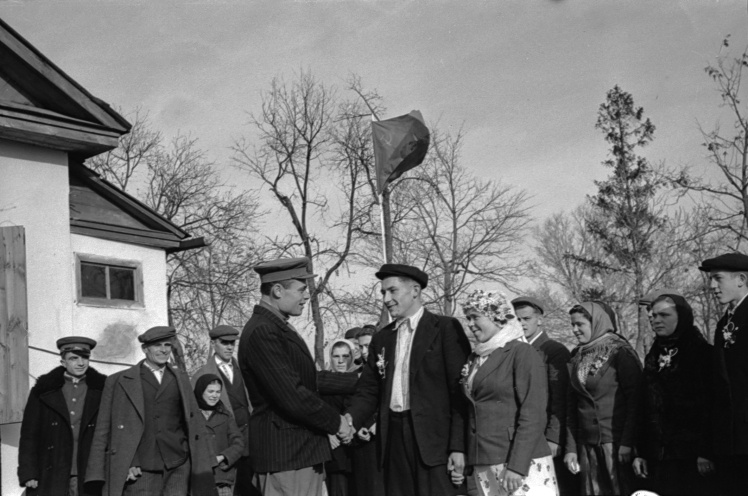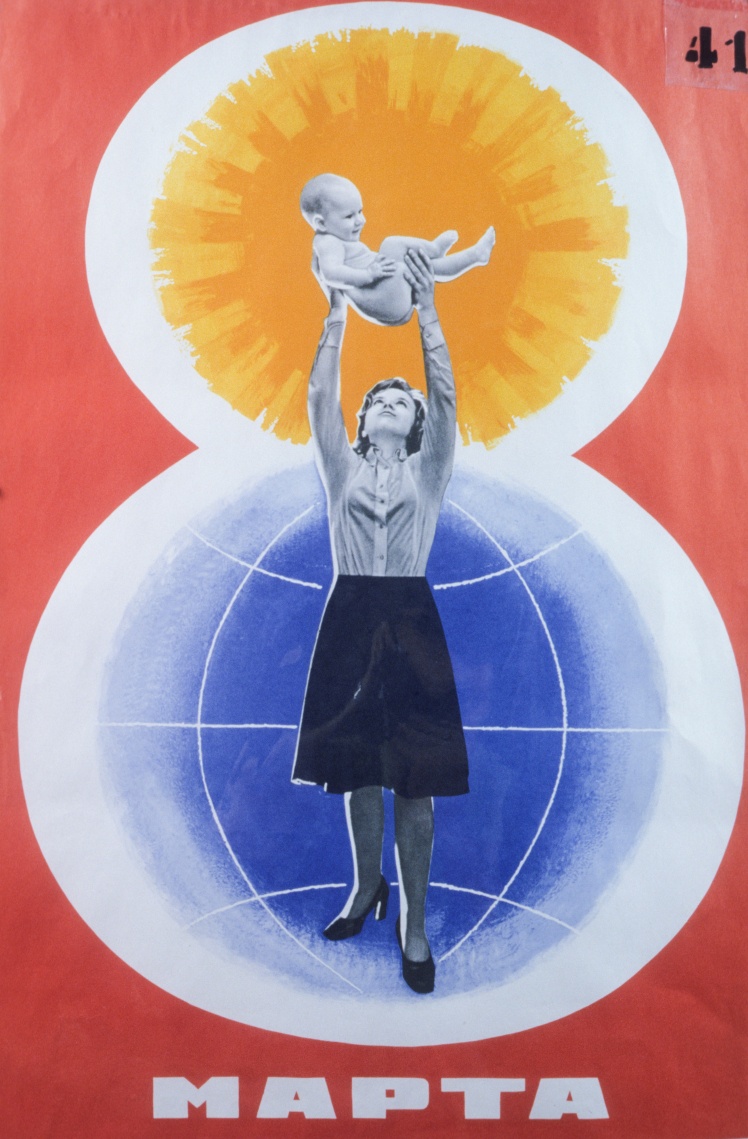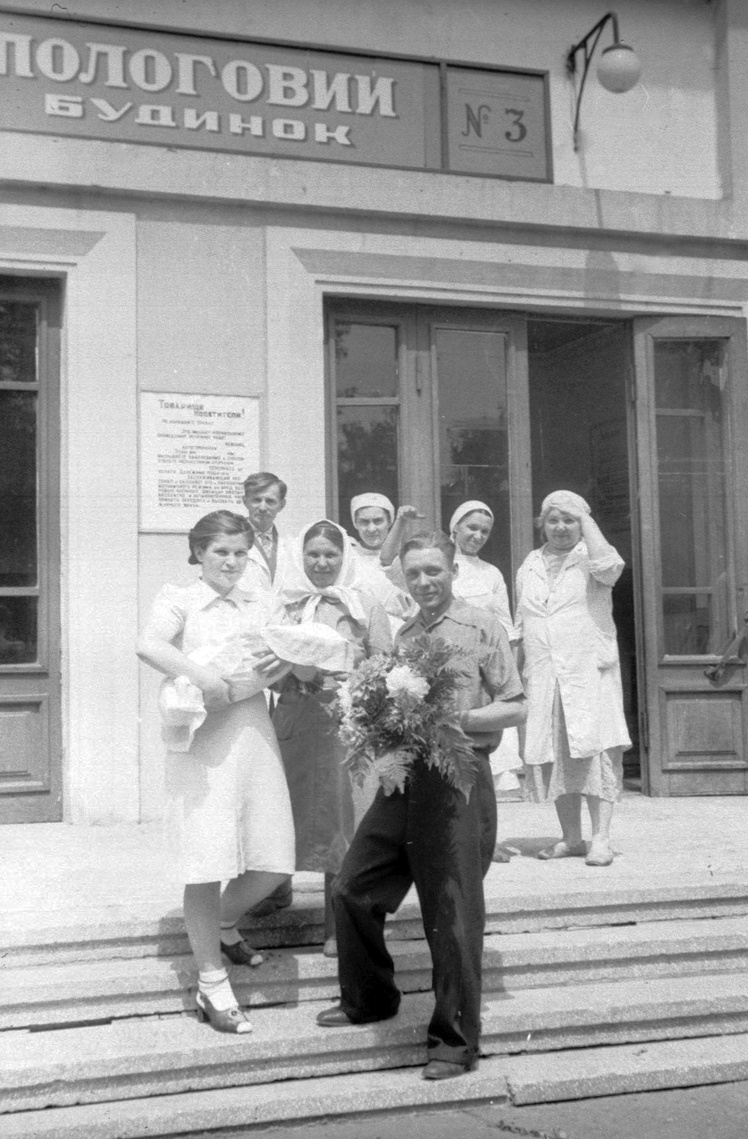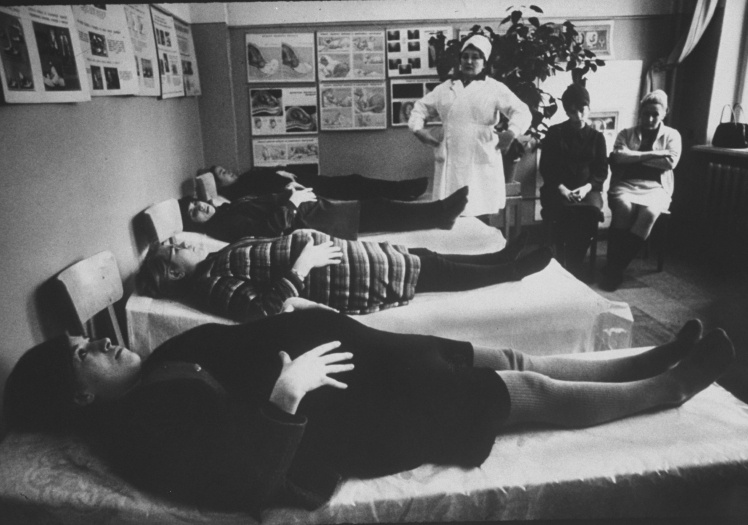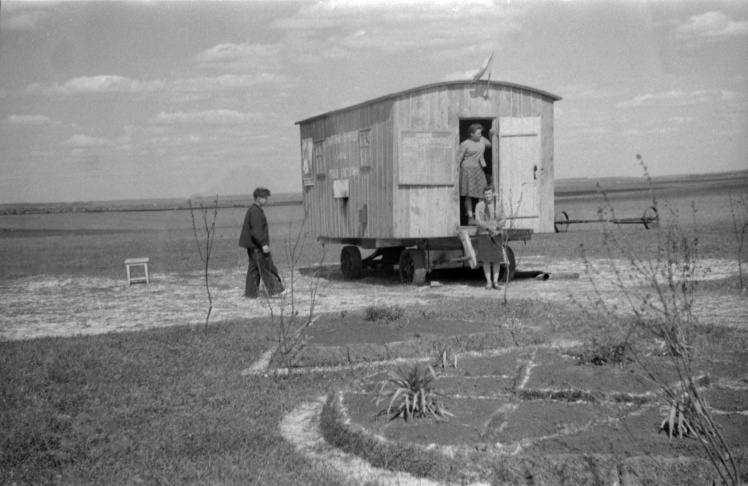Soviet propaganda poster, 1961.
During the time of the Russian Empire, abortion was a crime. Criminal punishment was provided both for the doctor who performed the abortion and for the pregnant woman herself. At the turn of the 19th and 20th centuries, the medical and legal communities called for relaxing abortion laws to increase their safety. However, the matter did not progress beyond discussions at professional conventions.
After the coup of 1917, Bolshevik ideologues urged women not to limit themselves to the family and the kitchen, but to actively participate in public life.
This fundamentally changed the customs of young people. A survey of young workers at the time showed that 63% of boys and 47% of girls under the age of 18 had already had sex. At the same time, they have practically no knowledge of sexual culture and contraception. Contraceptives were then considered "an element of bourgeois decay", which led to a surge in venereal diseases and unwanted pregnancies.
Soviet propaganda poster, 1923.
In order to somehow settle the situation, in 1920 the Bolsheviks recognized abortion as legal in the Russian Soviet Federative Socialist Republic. In July 1921, this law was introduced in the Ukrainian SSR. During the first years, the number of abortions increased so much that they began to be restricted. In 1924, permission for an abortion could be obtained only from a special commission. In 1926, abortion was completely banned in the first pregnancy, as well as for women who had an abortion less than six months ago. In 1930, abortions in the USSR became paid and their cost was regularly increased. In 1934, the prices were tied to the familyʼs income — almost a fourth of them had to be paid for an abortion. But that didnʼt help either. Abortions became common even in rural areas, and in large cities there were an average of six abortions per woman.
In July 1936, the Soviet government "met the numerous demands of working women" and completely banned abortion. It was a return to "royal" legal and moral norms. A prison term threatened both the "performers" of abortions and the pregnant women themselves. And it was now possible to have sex exclusively for childbirth.
During a visit to the October Hospital in Kyiv, 1920s.
Propagandists had to make a lot of effort to ideologically justify such a sharp turn. "While all the bourgeois countries of the world do not know where to send their people, where to find them work, what to feed them, we do not have enough people... We need more and more fighters — builders of this life. We need people. Abortion is an evil legacy of the order when a person lived for narrowly personal interests, and not for the life of the collective... There cannot be a gap between the personal and the public in our life. A Soviet woman has equal rights with a man... But our Soviet woman is not exempt from the great and honorable duty that nature has given her: she is a mother, she must give birth," wrote the well-known party functionary Aron Solts.
Dancing near the club on a day off at the Stalin collective farm, Khrystynivskyi district (in 1954 transferred to the Cherkasy region, liquidated in July 2020) Kyiv region, June 4, 1950. Locksmiths of the Luhansk Locomotive Plant brigade play chess during their lunch break, Luhansk, June 12, 1959. The head of the collective farm named after VKP(b) T. Onyshko congratulates the collective farm worker-peredovik Tymoshenko and the embroiderer-stakhanivka Kalyuzhna on their wedding day, Olenivka village, Fastiv district, Kyiv region, November 7, 1948.
In the first year and a half after the ban, the birth rate continued to rise. However, health care authorities were unprepared for this, which led to "overcrowding and overloading of maternity hospitals — factors that caused an increase in mortality among both newborns and women in labor." Then the number of clandestine abortions, performed mostly by people far from medicine, began to rise sharply. "Abortions are performed in many cases by "grandmothers" and healers, in addition to nurses, laundresses and similar employees of medical institutions," wrote the magazine "Socialist Legitimacy" at the time. Because of this, the mortality of women from abortions increased sharply: from 451 cases in 1935 to 4 thousand in 1940. And these are only official data, which were far from complete. The ban on abortion led to an increase in the number of murders of children under the age of one. In the late 1930s, they accounted for about a quarter of all murders in the country.
Soviet propaganda poster, 1925.
During the Second World War, the issue of abortion became less relevant. But as early as 1944 in the Soviet Union, there were more than 30 abortions per 100 pregnancies. In 1950, more than a million abortions were recorded, and about 90 percent of them were clandestine.
Millions of families often had no choice but to terminate an unplanned pregnancy. For most, the reason was poverty and lack of housing, queues for a state apartment stretched for decades. Party leaders received hundreds of letters asking them to allow abortions. "I am asking very much, as a mother of four children (the eldest is 6 years old, the middle one is 4 and 3 years old, the youngest is only 5 months old), to allow me to have a medical abortion. Iʼm tired, I need to rest at least a little, because Iʼm not a machine to produce two children a year. I donʼt have the strength to give birth and breastfeed anymore."
Feeding children in the postpartum room of the maternity home of the "Dawn of Communism" collective farm, Cherkasy district, Kyiv region, August 30, 1952. Blacksmith of the Lvivsilmash plant I. Romaniuk with his family in a new apartment, December 31, 1953.
By the mid-1950s, the Soviet authorities began to understand that it was impossible to increase the birth rate by administrative and repressive methods. This situation led to the statement of the Minister of Health, Maria Kovrygina, that "a woman cannot be turned into a creature that must give birth and give birth." After Stalinʼs death in 1953, state policy on abortion gradually began to soften. And finally, on November 23, 1955, abortion was legalized in the country. This decision could have been influenced by the attempts of the then leader of the USSR, Nikita Khrushchev, to establish relations with Western countries. This period went down in history as the "Khrushchev thaw".
Soviet propaganda poster, 1977. I. Omelchenko leaves maternity hospital No. 3 with a child in his arms, Kyiv, 1946.
Despite legalization, abortion in Soviet society continued to be considered shameful and immoral. A certificate from the hospital about the termination of pregnancy could seriously affect the attitude of colleagues at work. Because of this, underground abortions continued to flourish. Sexual education in schools was limited to a couple of pages in a biology textbook, and contraceptives were in short supply. Therefore, women continued to use "folk" methods. Some believed that after sex you need to take a hot bath and drink something heavy — then "everything will pass." Others used decoctions of various herbs and even a solution of household soap.
Queues also lined up at state abortion clinics. The fact that abortions at an early stage were performed almost without anesthesia did not stop them. And women were not given sick leave, they usually tried to leave the hospital a few hours after the operation. Since legalization in 1955, official abortion statistics have grown and by 1964 reached a peak of seven million a year nationwide. And during the 1970s and 1980s, this figure remained at the level of approximately five million abortions per year.
Pregnant Soviet women at a briefing before the birth of a child, August 1956. Classes on breathing exercises to facilitate future childbirth, 1969. Field conditions of the womenʼs tractor brigade, Velikobirkiv district (liquidated in December 1962) of Ternopil region, 1950.
If you want more interesting materials about historical events, support us by donating: 🔸 in hryvnia , 🔸 in cryptocurrency , 🔸 Patreon , 🔸 PayPal: [email protected].
